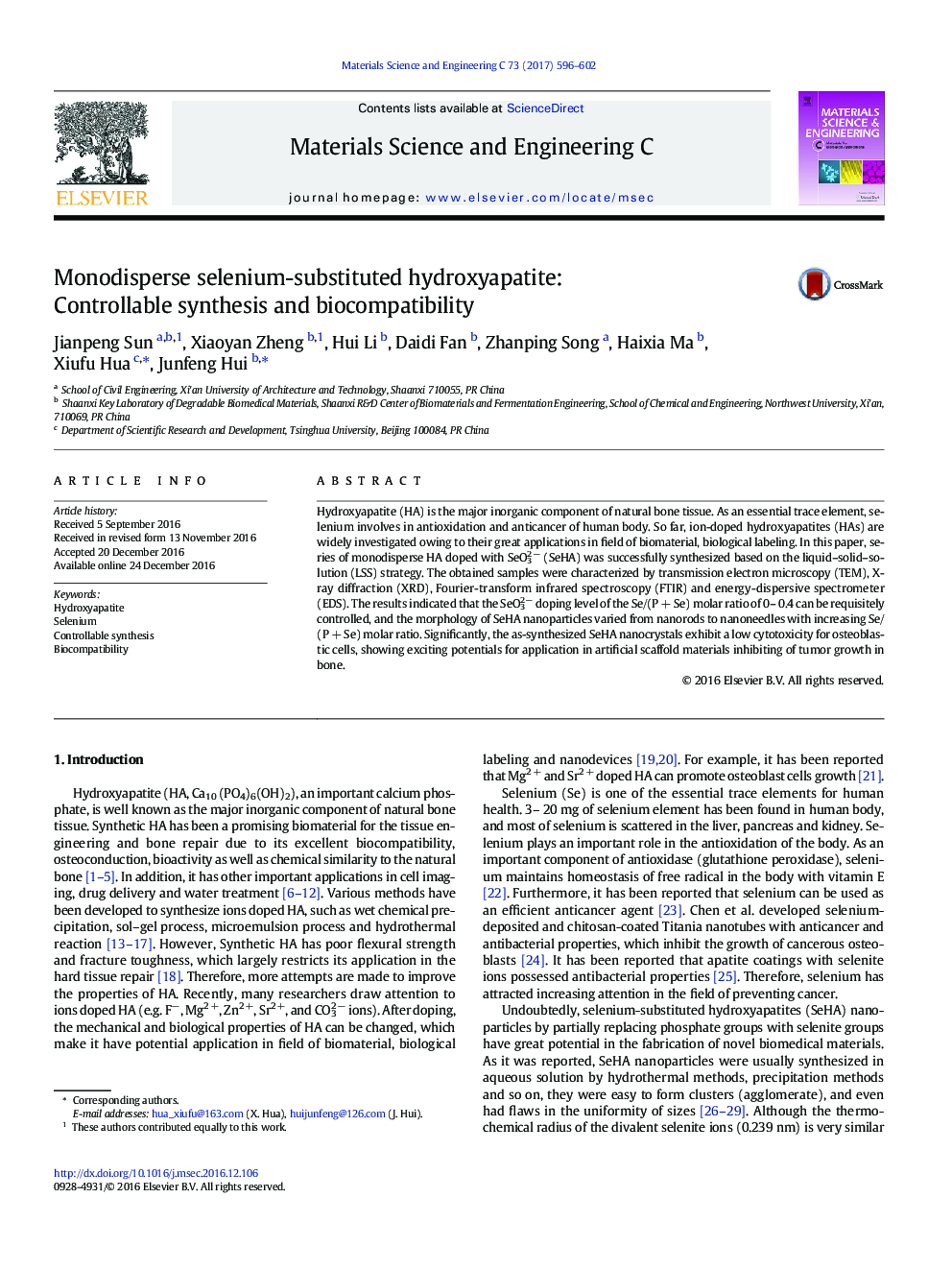| Article ID | Journal | Published Year | Pages | File Type |
|---|---|---|---|---|
| 5434966 | Materials Science and Engineering: C | 2017 | 7 Pages |
â¢Series of SeO32 â doped HA nanorods or/and nanoneedles were successfully synthesized.â¢The morphology of the HA nanocrystals can be easily controlled by changing the Se/(P + Se) molar ratio.â¢The as-synthesized SeHA nanocrystals exhibit a low cytotoxicity for osteoblastic cells.â¢Showing exciting potentials for application in artificial scaffold materials inhibiting of tumor growth in bone
Hydroxyapatite (HA) is the major inorganic component of natural bone tissue. As an essential trace element, selenium involves in antioxidation and anticancer of human body. So far, ion-doped hydroxyapatites (HAs) are widely investigated owing to their great applications in field of biomaterial, biological labeling. In this paper, series of monodisperse HA doped with SeO32Â â (SeHA) was successfully synthesized based on the liquid-solid-solution (LSS) strategy. The obtained samples were characterized by transmission electron microscopy (TEM), X-ray diffraction (XRD), Fourier-transform infrared spectroscopy (FTIR) and energy-dispersive spectrometer (EDS). The results indicated that the SeO32Â â doping level of the Se/(PÂ +Â Se) molar ratio of 0-Â 0.4 can be requisitely controlled, and the morphology of SeHA nanoparticles varied from nanorods to nanoneedles with increasing Se/(PÂ +Â Se) molar ratio. Significantly, the as-synthesized SeHA nanocrystals exhibit a low cytotoxicity for osteoblastic cells, showing exciting potentials for application in artificial scaffold materials inhibiting of tumor growth in bone.
